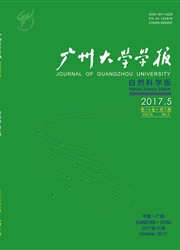

 中文摘要:
中文摘要:
生物质等离子体热解对于提高生物质能转化利用效率、提高生成可燃气体的成份并降低CO2排放量具有非常积极的意义.研究采用高频等离子体热解技术进行了生物质热解实验,通过改变电源输入功率、反应器内的电压以及改变电极间距,然后对比分析改变操作条件下的实验产物.结果表明,在输入功率1.6~2.0kW范围、体系压力3.0~8.0kPa范围以及不同的电极结构条件下进行的热解产物包括H2、CO、CH4、CO2、其它轻质烃以及热解焦炭.研究还考察了不同条件下的气体组成及热解炭黑的再利用.最后,对该技术进行了初步的经济性分析.研究显示,等离子体热解气化是一项非常合适的生物质气化技术.
 英文摘要:
英文摘要:
A laboratory-scale capacitively coupled radio frequency (RF) plasma pyrolysis reactor working in reduced pressure has been developed and tested. From a series of experiments, it was found that the electrode ge- ometry, input power and reactor pressure were the key parameters affecting the pryolysis products' characteristics. The products of biomass gasification using different electrode geometry, input power (1.6 -2.0 kW) and reactor pressures (3.0 -8.0 kPa) were analysed. A pyrolysis gas consisting of H:, CO, ca4, CO: and light hydrocarbons as well as a pyrolytic char can be obtained. On average, the gas yield can reach 66 wt. % of the biomass feed. A technical economical analysis on the RF plasma pyrolysis system was also given.
 同期刊论文项目
同期刊论文项目
 同项目期刊论文
同项目期刊论文
 期刊信息
期刊信息
